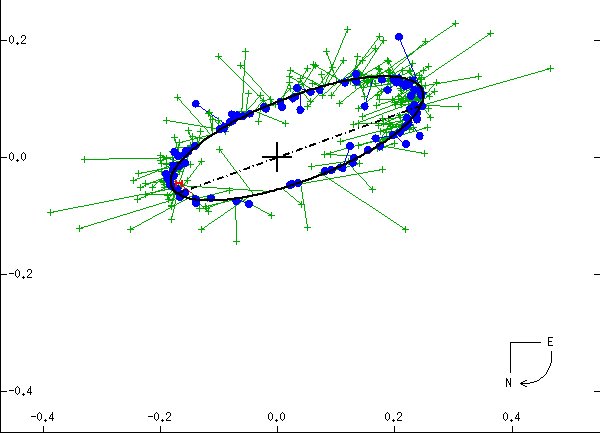
 |
Kappa Peg B and A orbit each other every 11.6 years averaging about 8 Astronomical Units apart. Here we see the apparent orbit of Kappa A around Kappa B, which is not at the focus of the apparent ellipse because of the orbit's tilt and orientation relative to the plane of the sky. Note the small scale on the axes, the two stars very close to each other, at least as seen from Earth. (W. I. Hartkopf and B. D. Mason, Sixth Catalog of Orbits of Visual Binary Stars, US Naval Observatory Double Star Catalog, 2006.) |